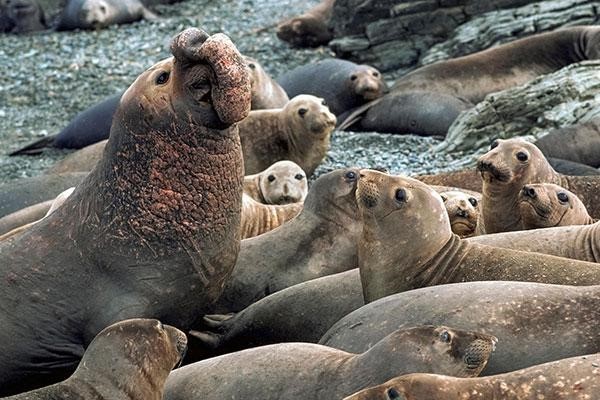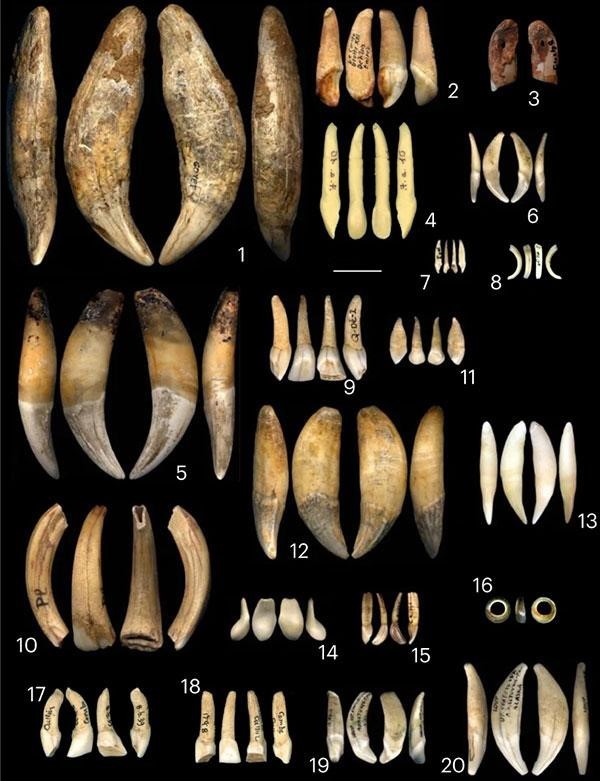Hello Nature readers, would you like to get this Briefing in your inbox free every day? Sign up here.

The most dimorphic species was the northern elephant seal (Mirounga angustirostris), where males had a mean mass 3.2 times that of females (Michele and Tom Grimm/Alamy)
Males aren’t larger in majority of mammal species
An analysis of more than 400 mammal species is overturning Charles Darwin’s assertion that in most, males are larger than females. Researchers looked at around 5% of species from each of the 17 mammalian orders that contain at least 10 species. They found males are bigger in 45% of species, with 39% showing no sexual size dimorphism and 16% having larger females than males. “There’s been this really strong inertia toward the larger male narrative, but it was just based on Darwin’s hand-wavy statement, and the evidence doesn’t really support it,” says evolutionary biologist and study co-author Kaia Tombak.
Scientific American | 4 min read
Reference: Nature Communications paper
Biden seeks science funding boost
US President Joe Biden has proposed modest increases in federal spending on science and innovation for the 2025 fiscal year, including a 20% increase for the Environmental Protection Agency and more than 5% for the Centers for Disease Control and Prevention. Similar proposals in previous years have run up against opposition among lawmakers in Congress, who decide how much the government will spend. Biden’s budget “is nothing more than a showcase for the policies and the spending that the White House would like to pursue if it had the ability to do so, which it doesn’t,” says Michael Lubell, a physicist who tracks science-policy issues. Meanwhile, negotiations continue over the 2024 budget: much of the federal government — including the National Institutes of Health, the world’s largest public funder of biomedical research — is poised to shut down in less than two weeks unless lawmakers act.
How text-to-video AI could change science
The release of OpenAI’s Sora text-to-video AI tool last month was met with a mix of excitement and trepidation from researchers who are concerned about misuse of the technology. Some say the result will be a deluge of fake but compelling video and audio, which poses particular problems for upcoming elections. But such tools could be used for good too, such as communicating findings to a lay audience and enabling researchers to wade through huge datasets.

Sora is one of several AI tools that generates video from text promptsCredit: OpenAI
This footage isn’t real — it was created by the AI tool Sora. The system seems to be able to produce more photorealistic and compelling content from simple text prompts than other video-generating algorithms. (OpenAI)
Features & opinion
What WebAssembly can do for you
WebAssembly can compile code written in dozens of programming languages, including C, C++ or Rust, and works inside a browser — no installation required. Researchers are using it to build analysis tools for scientific data, which can then be run even on low-power laptops or phones. But users must brace themselves for complications. “You often have to modify the original code to get around things that WebAssembly doesn’t support,” says bioinformatics software engineer Robert Aboukhalil. Check out a demo from Nature technology editor Jeffrey Perkel.
How to fix broken PhD assessment
Most PhDs are assessed on their final dissertation — something that hasn’t changed for at least half a century. Reform is urgently needed, argues a Nature editorial. Part of the problem is that few doctoral supervisors have teaching qualifications or awareness of education innovations. “At a minimum, doctoral supervisors should take the time to engage with the research that exists in the field of PhD education, and how it can apply to their interactions with students.”
Has the menopause become over-medicalized?
Last week, The Lancet published a conversation-sparking editorial arguing that “commercial companies and individuals with vested interests have over-medicalized menopause”. The oversimplified idea of menopause as a health problem to be solved by hormone replacement therapy (HRT) is not based on evidence, argued a series of papers and perspectives in the journal. “Menopause does not herald the start of a period of decay and decline but is a developmental life stage,” says the editorial.
In UnHerd, physician Margaret McCartney and health journalist Deborah Cohen dig into the evidence for the benefits of HRT and the therapy’s cultural and historical context. “There was a time when women were expected to shut up and put up” with symptoms such as hot flashes, they write. Now, in some ways, the pendulum has swung too far in the other direction, says public health researcher Brooke Nickel, who studies the language used to sell HRT products to women. “They’re really spinning that feminist narrative around,” she says. “If you don’t do something, you’re not taking control of your body or you’re being oppressed by other people.”
The Lancet editorial | 5 min read, part of its series on menopause & UnHerd | 10 min read
Image of the week

These adornments made from the teeth of animals including bear (1), elk (4) and fox (6,7) were crafted by Gravettian hunter-gatherers — the culture responsible for the iconic Venus of Willendorf figurine. Researchers analysed thousands of such personal ornaments, along with genetic data. They found that the variety in the jewellery styles couldn't be fully explained by how far apart groups lived, and identified nine distinct cultural groups existing in Europe between 34,000 and 24,000 years ago. These groups mostly align with genetic data, but also reveal more nuanced patterns, indicating that culture and genetics are interconnected but not perfectly aligned. (Nature Human Behaviour | 43 min read) (Jack Baker et al./Nature Human Behaviour)
